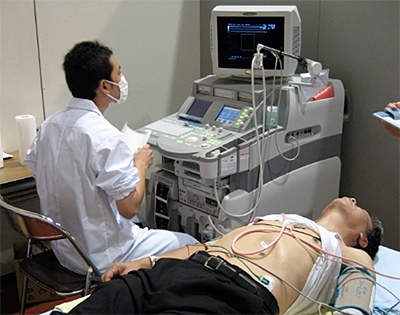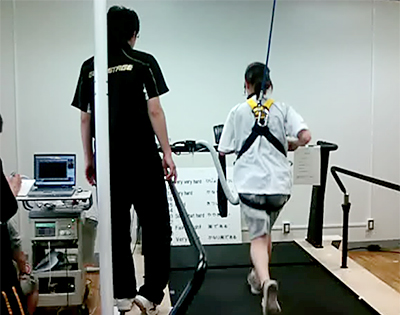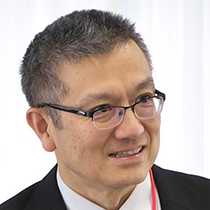The advancement of science and genetics over the last few decades has greatly enhanced our understanding of skeletal muscle biology.
At Tohoku University's Department of Health and Sports Science, Professor Ryoichi Nagatomi has been studying the body's adaptation to physical training, and the practical application of exercise towards attaining good health.
His primary interest is in understanding the processes of skeletal muscle regeneration and fibrosis, the impact of physical stress on the immune system and the preventive aspect of physical activity and exercise.

Professor Ryoichi Nagatomi has been studying the body's adaptation to physical training, especially skeletal muscle regeneration after an injury.
The Mechanics:
Muscle fibers get damaged when muscles are used at their full capacity. But they heal quickly because the body has a reserve supply of muscle stem cells called satellite cells. The self-renewing properties of satellite cells not only maintains the muscle stem cell population in the body, but also provides myogenic cells, which proliferate, differentiate, fuse, and lead to the formation of new myofibers whenever necessary to repair the damage.
"In a couple of weeks, new muscles are made, so you're ok even if you damage some of your muscle fibers during intense training. In fact, this replacement of damaged fibers is the process by which we gain muscle strength," says Nagatomi.
But hard and tough training doesn't always bring about the desired results. A muscle injury called laceration can sometimes develop, causing sudden pain and weakness during training.
When that occurs, the repair process is slowed down because laceration creates too much space within the muscle tissue. Satellite cells do not develop into myogenic cells when there is too much space. Instead, they develop into myofibroblasts.
Myofibroblasts produce a lot of matrix proteins such as collagen to fill the space and make a fibrotic tissue within the muscle. "Collagen fibers serve as a new directional guide to regenerating muscle fibers, telling them which way to grow, but it takes a long time to be repaired once you have the fibrotic tissue." Even without laceration, too much of intense training may also induce myofibroblasts. So Nagatomi recommends intense training, but less frequently- perhaps every other day instead of daily - to avoid developing fibrotic changes.
The Switch:
To address the complications of fibrotic changes after excess muscle damage, Nagatomi has been studying the effectiveness of using a molecular switch, by inactivating one, or changing the balance between two, proteins.
"We injured the muscle of a mouse under anesthesia, then tried to switch on and off the molecular switch to drive the satellite cells towards successful repair of the muscle during the course of damage. And we found that it worked. The mouse had serious damage in its muscle but it recovered very quickly without fibrotic changes."
But upon further analyses, Nagatomi and his team found a problem.
"It was ok for muscle regeneration but by switching the protein, we found that we had used up all the satellite cells. Usually if you look into the muscle tissue, you find satellite cells everywhere even after the damage-repair process. But in the recovered muscle after switching the protein, we found no satellite cells. That means that if you damage that muscle again, it will not recover. And that's not good."
The focus now for Nagatomi, is to further explore the feasibility of switching, by findings ways to keep usable satellite cells from disappearing after a switch.
Training Smart:
Although muscle damage and recovery is a natural occurrence, Nagatomi says it is important to acknowledge that everyone has different potential and physical strengths. In other words, there are smart ways to train.
"If the coach asks for 30 sit-ups, those who have a limit of 30 would get the best benefits. For those who can do 50, the 30 won't maximize the use of their muscles. For those who can only do up to 20, then 20 is sufficient stimuli for their muscles to develop.
"Here in Japan, people don't realize the importance of maximizing individual potential. They love doing drills but they don't give enough thought to why they are doing the drills. If you have more strength, will you definitely be better? Not always! It's more important that you have the skills to make good use of the muscles you have."

Through the understanding of muscle development and growth, potential can be maximized and injury avoided during training.
Why Muscles are Important:
While muscle training is often associated with sports, the importance of muscles in daily life cannot be overstated. In fact, even though it may not always be obvious, a wide range of muscles are used every day in simple, basic activities.
"Without muscles you can't move, you can't do exercise, you can't live independently," says Nagatomi. "Older people have weaker bones, so it's even more important that they have good muscles so they don't fall. Muscles are as important as your brain. It's one of the systems that maintains not just your lifestyle but also your life."
Nagatomi wants his research to be applicable to practical, daily life, stressing that "science is for everyone, not just the researcher." To that end, a population study involving more than a thousand people is on-going, to find out if external factors - such as diet and environment - can also impact muscle growth and recovery.

Vice dean of Tohoku University's Graduate School of Biomedical Engineering
Professor of Health and Sports Science at the School of Medicine.

